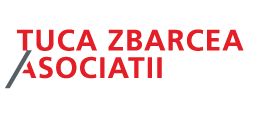At the beginning of this year, the Court of International Commercial Arbitration of the Chamber of Commerce and Industry of Romania (CICA) has adopted a new set of arbitration rules (the New CICA Rules). The New CICA Rules govern arbitral proceedings starting with 1 January 2025, replacing the rules which were in force from 2018 (the Old CICA Rules).
As with all institutional rule changes, the New CICA Rules raise several interesting issues regarding some of the usual suspects: multi-party arbitration, usage of remote means of communication, third-party funding.
This article deals with perhaps the most fascinating one – the shift of paradigm from tribunal-appointed experts (TAEs) to party-appointed experts (PAEs) and the related adjustments to the provisions on the use of experts.
The Old CICA Rules – tribunal-appointed experts
The default procedure under the Old CICA Rules entailed the tribunal appointing TAE, while the parties could appoint a counselor expert to participate on their behalf in the drafting of the expert report only upon their express request and only after being granted permission by the arbitral tribunal to do so[1].
The recourse to PAEs was treated as an exception by the Old CICA Rules – parties had to agree on it and inform the tribunal of their agreement at the latest during the case management conference[2].
New Rules, new perspectives
The New CICA Rules, which will apply to all arbitrations starting this year, seem to propose a fundamental shift of paradigm. The rule appears to be that PAE reports are submitted together with the parties’ submissions, while TAEs remain to be appointed by the arbitral tribunal only (i) when it deems the reports insufficient to resolve the relevant matter at hand and (ii) after consulting the parties[3].
At a high level, this shift speaks to CICA’s commitment to a more flexible and international-friendly approach, one that aims to depart from the domestic rules applicable to court litigation – where TAEs are the norm. While this purpose is highly commendable, change often comes with practical hurdles. And these new provisions may be no stranger to those.
As anticipated, under the new rules, the tribunal may appoint a TAE when it deems the reports submitted by the PAEs as insufficient – that is, after the tribunal’s review of these reports. Since in many cases the arbitral calendar provides for two sets of submissions, each accompanied by its own set of reports, the arbitral tribunal’s decision to appoint a TAE may come well after all the parties’ submissions have been made. This would effectively restart – at least to a certain extent – the arbitration calendar, as the newly appointed TAE would need to be allowed sufficient time to investigate the facts and issue the report, and the parties should be provided with an adequate opportunity to comment. In turn, this translates into an increase in costs and duration of the proceedings. One potential practical remedy to consider would be the head-on discussion of this matter at the case management conference and the express inclusion in the procedural calendar of an intermediary deadline – for instance, after the first set of memoranda submitted by the parties – at which the need for a TAE should be discussed and decided.
CICA’s paradigm shift also opens the door to some practical questions with even deeper consequences such as whether the parties have (or should have) the right to a TAE. Under the New CICA Rules, they do not have one – the TAE may only appear in the proceedings if the reports submitted by the PAEs are deemed insufficient. This comes against the background of increased scrutiny in the international arbitration community over the independence of PAEs – in practice, situations in which opposing expert reports are fundamentally irreconcilable have raised concerns about the applicable independence standard and, ultimately, about the effectiveness and efficiency of arbitrations conducted under this sometimes-inexplicable gap[4]. It remains to be seen whether parties would look to explore such issues in the context of set-aside proceedings, especially brought before courts known to have tighter procedural rules.
Aside from this fundamental shift, there are two other peripheral notes to be made in relation to the provisions applicable to experts under the new rules.
First, the New CICA Rules – unfortunately – keep using the same somewhat ambiguous terminology used by the former rules, referring both to “party-appointed experts” (paragraph 1 of Article 36) and “counsellor-experts” (paragraph 4 of Article 36). While it seems that the first term refers to experts appointed by parties in the absence of any expert designated by the tribunal, and the latter refers to experts appointed by the parties precisely to assist the tribunal appointed expert, it remains unclear if there is a substantive difference between the two, both as to their role as well as to the applicable independence standard.
Second, the New CICA Rules further facilitate the appointment of “specialists” from outside the expert lists authorized by the Ministry of Justice. While under the previous rules the tribunal could only consider appointing specialists “whenever it found that the field in which the expertise is to be carried out is a specialized one, and its complexity mandated it”[5], the New CICA Rules simply state that the tribunal may opt for this alternative, after consultation with the parties[6]. This is a welcome flexibility add-on to the proceedings, since the requirement to use primarily experts from the lists of the Ministry of Justice, which continues to apply in court proceedings and was often mirrored in arbitration proceedings, has proven cumbersome and has often led to dissatisfaction with the level of service afforded.
Takeaways
The adoption of the New CICA Rules marks a significant milestone in CICA’s aim to consolidate its position not only as a key arbitral institution for domestic disputes, but also for international arbitrations. Experts have come to play crucial roles in many disputes and the effective administration of expert evidence is often essential to a timely and cost-effective resolution of the dispute.
The fundamental paradigm shift from TAEs to PAEs may be a step in the right direction. But ultimately, the success of these new rules will depend on the collaborative efforts of all actors within the arbitration framework. Counsel can also play its part by engaging in the process, anticipating hurdles, and streamlining case management.
[1] See Article 37 of the Old CICA Rules, in force between 1 January 2018 and 31 December 2024, available at: https://arbitration.ccir.ro/wp-content/uploads/2025/01/Rules-in-force-until-2024.pdf.
[2] See Article 31 of the Old CICA Rules.
[3] See Article 36 of the New CICA Rules, in force as of 1 January 2025, available at:
https://arbitration.ccir.ro/wp-content/uploads/2025/01/Reguli-CICA_2025-EN.pdf.
[4] See e.g. Douglas S. Jones, “Party Appointed Experts in International Arbitration—Asset or Liability?”, in Stavros Brekoulakis (ed), Arbitration: The International Journal of Arbitration, Mediation and Dispute Management, (© Chartered Institute of Arbitrators(CIArb); Sweet & Maxwell 2020, Volume 86, Issue 1), p. 2; Howard Rosen, “How Useful Are Party-Appointed Experts in International Arbitration?”, in Albert Jan van den Berg (ed), ICCA Congress Series No. 18 (Miami 2014): Legitimacy: Myths, Realities, Challenges, ICCA Congress Series, Volume 18 (© Kluwer Law International; ICCA & Kluwer Law International 2015), p. 384; John Gaffney and Gillian O’Leary, “Tilting at Windmills? The Quest for Independence of Party-Appointed Expert Witnesses in International Arbitration”, Asian Dispute Review, (© Hong Kong International Arbitration Centre (HKIAC); Hong Kong International Arbitration Centre (HKIAC) 2011, Volume 13, Issue 3), p. 85.
[5] See Article 35 para. (6) of the Old CICA Rules.
[6] See Article 37 para. (7) of the New CICA Rules.
By Catalin Alexandru, Partner, Irina Suatean, Senior Associate, and George Domocos, Associate, Filip & Company




